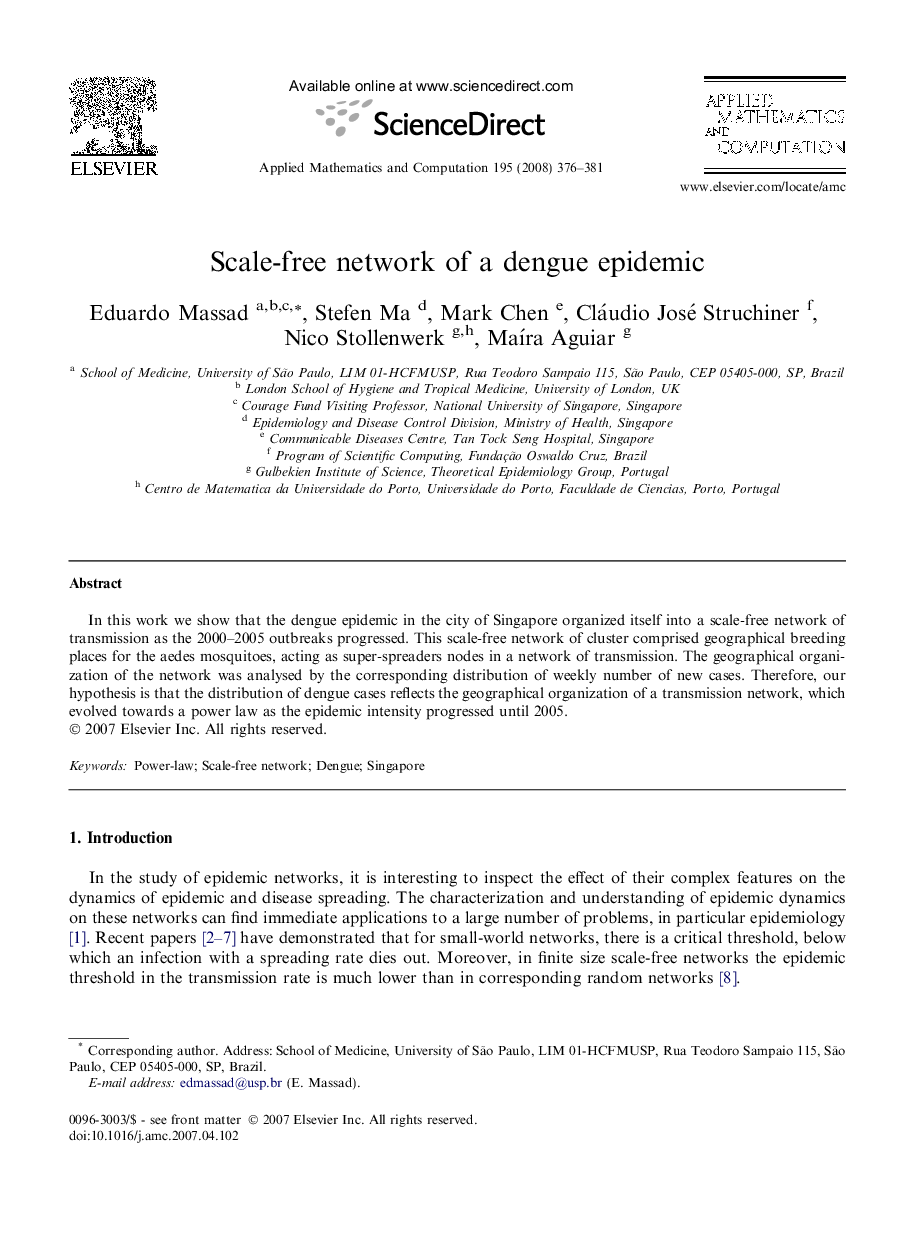| Article ID | Journal | Published Year | Pages | File Type |
|---|---|---|---|---|
| 4633920 | Applied Mathematics and Computation | 2008 | 6 Pages |
Abstract
In this work we show that the dengue epidemic in the city of Singapore organized itself into a scale-free network of transmission as the 2000-2005 outbreaks progressed. This scale-free network of cluster comprised geographical breeding places for the aedes mosquitoes, acting as super-spreaders nodes in a network of transmission. The geographical organization of the network was analysed by the corresponding distribution of weekly number of new cases. Therefore, our hypothesis is that the distribution of dengue cases reflects the geographical organization of a transmission network, which evolved towards a power law as the epidemic intensity progressed until 2005.
Related Topics
Physical Sciences and Engineering
Mathematics
Applied Mathematics
Authors
Eduardo Massad, Stefen Ma, Mark Chen, Cláudio José Struchiner, Nico Stollenwerk, MaÃra Aguiar,
